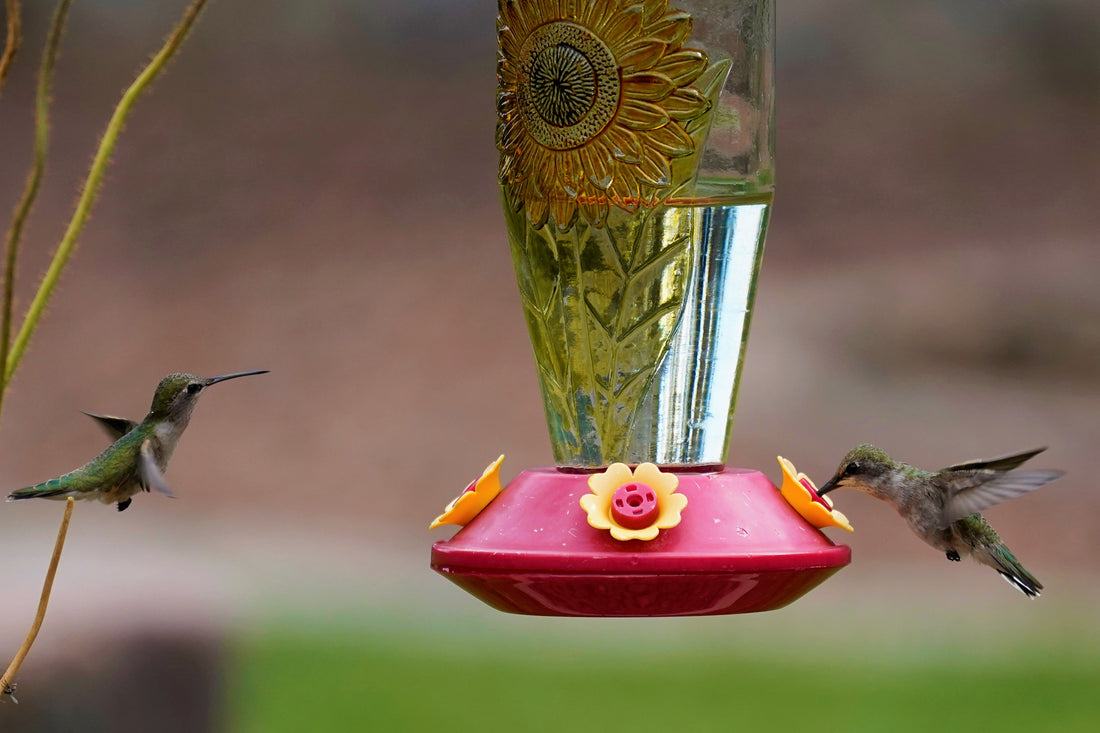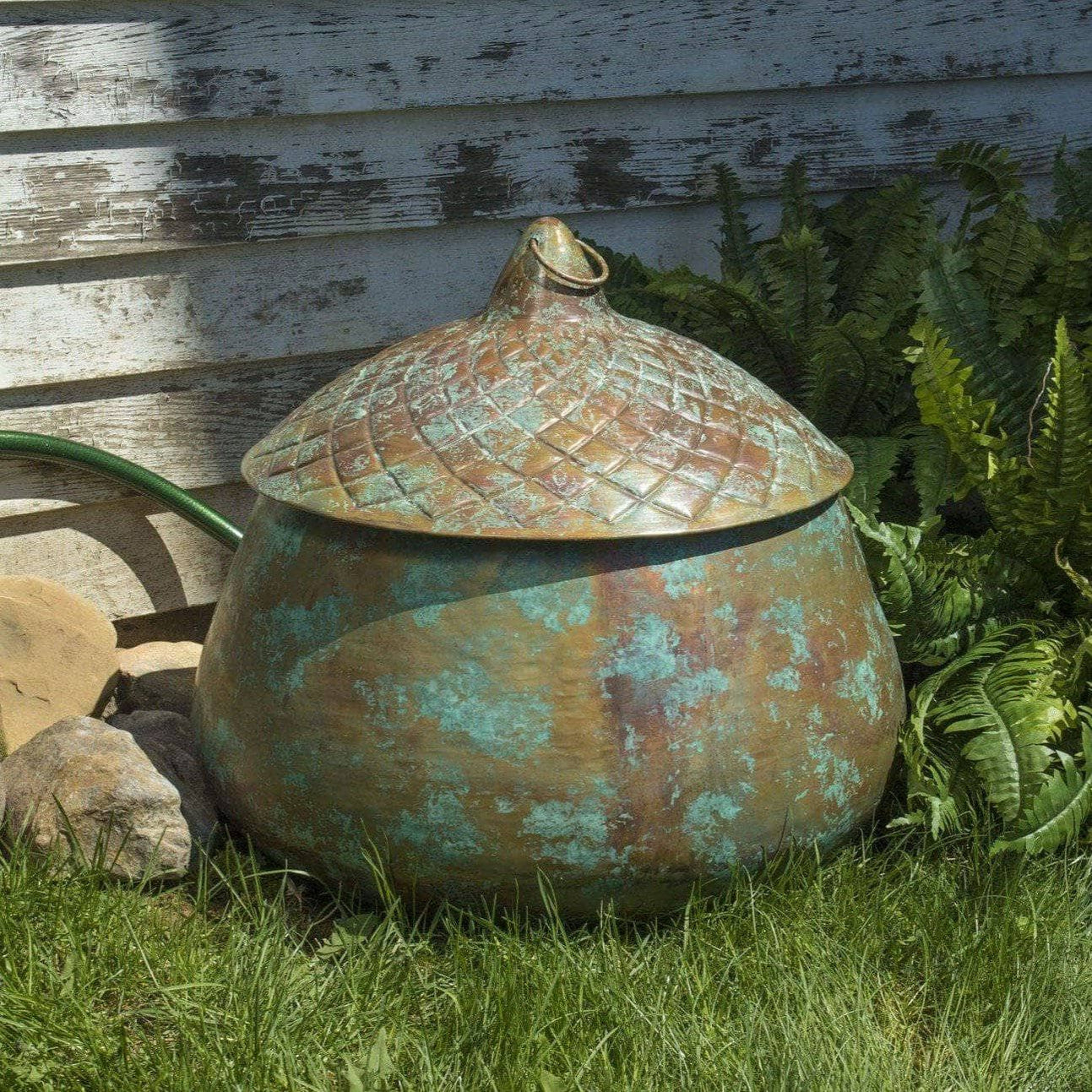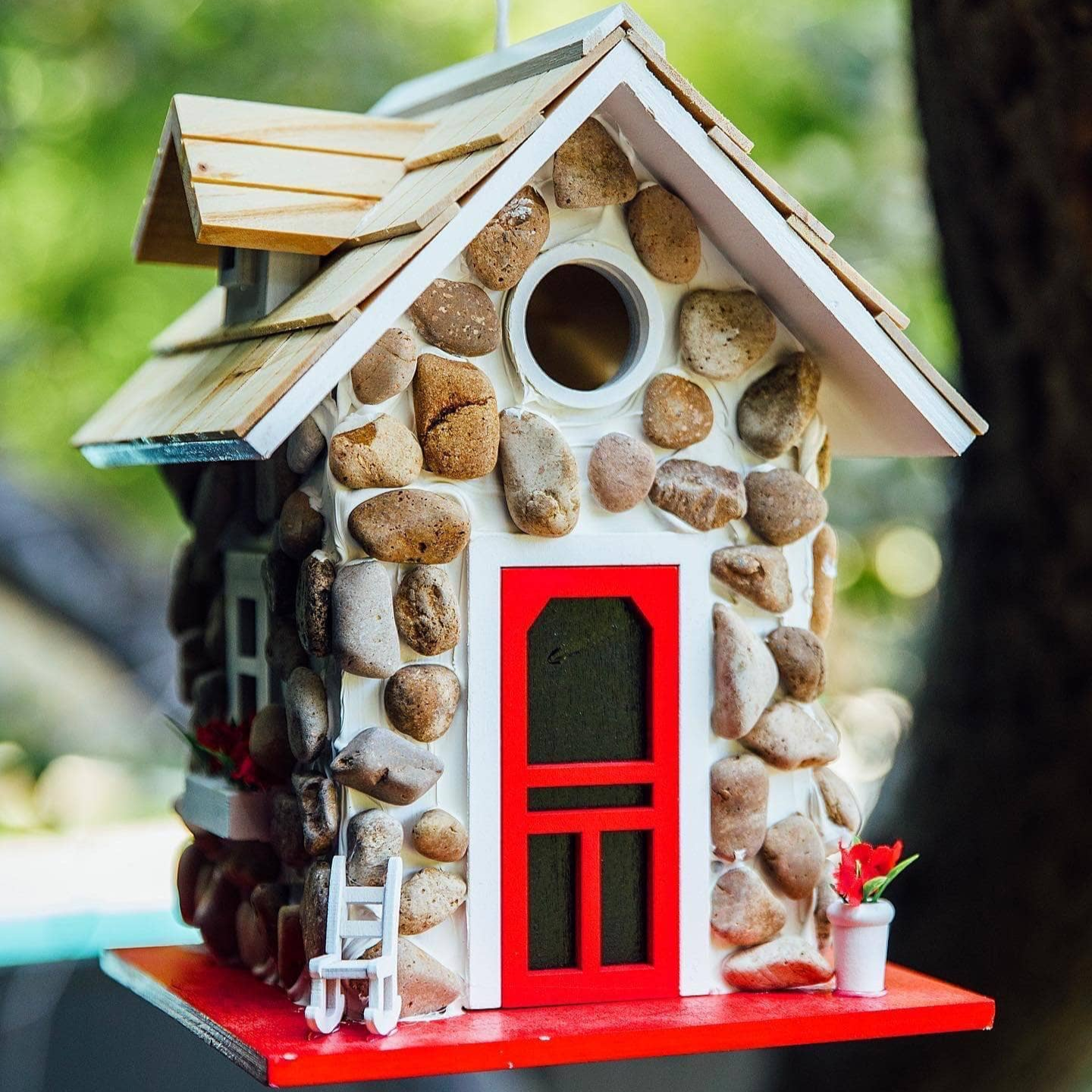
Should You Change Your Hummingbird Feeder Often?
Share
Once you've invested in a hummingbird feeder, you'll need to keep it clean and regularly replace the old food you've placed inside it. But how often? In this article, you'll find out exactly when to swap out hummingbird food with fresh nectar--and how to keep those hummingbird feeders nice and clean.
Plus, we've thrown in some extra tips and tricks to ensure you're attracting as many hummingbirds as possible to your backyard. We'll also touch on how to make your own hummingbird food--it's easy, we promise!
How frequently should I swap out hummingbird nectar?
Determining how often you need to change your hummingbird feeder depends on the climate and season of where you live. If the weather is warm, you'll want to empty and clean the feeder two times a week. If it's cool out, weekly should suffice.
If the hummingbirds that feast on your feeder drink up all the nectar, you should clean it before refilling it--every time. This means you may end up cleaning it out more frequently than you'd imagine.
It can be a lot of work to safely feed hummingbirds. And if you're lucky enough to have lots of visitors in your yard, especially during hot weather months, you'll probably have to spend some time changing out your bird feeder. But it's so worth it, right?
Hummingbird Nectar Shelf Life
The shelf life of your hummingbird's sugar water depends on where you live--and what the weather's like right now. For example, hummingbird food on the Gulf Coast during mid-summer will need to be changed more than hummingbird food on Lake Michigan during spring.
Here's a good rule of thumb: If the weather is cooler than 60 or so degrees, you can definitely leave nectar out for a few days--and sometimes, even a week. But on a day where the weather is easily in the nineties, that food could mold or spoil even after one day! So, when the weather is hot, rinse and clean your bird feeder with hot water often--and make sure to scrub with a brush to prevent buildup. (Don't worry, we'll go more into depth on cleaning a hummingbird feeder next.)
How to Clean Hummingbird Feeders
If you're new to caring for hummingbird feeders, definitely check out our Happy Gardens Guide to Cleaning Hummingbird Feeders. It's got all the details you need to take care of your new bird feeder while keeping the hummingbirds that rely on it for sustenance happy and healthy.
As a recap, here's how to get those hummingbird feeders nice and clean:
-
Use warm, soapy water--and always pick a safe soap
-
Scrub carefully, ensuring to leave no residue or buildup
-
Ensure feeder is in good shape during cleaning
-
If you see mold, discontinue use
Please note that the manufacturer's directions for cleaning your unique hummingbird feeder may be different from ours. Feel free to follow those instructions, and use ours as a reference.
How to Attract Hummingbirds
Remember, there's more to attracting hummingbirds to your outdoor space than simply adding a nectar feeder to your yard. To ensure hummingbirds attracted to your outdoor space stick around, invest in plenty of blooming flowers. There are several species that can all but guarantee some feathered friends come to visit you very soon.
Want to learn more about attracting hummingbirds? From choosing the right flowers to picking the right accessories, we've got you covered Check out 10 Ways to Attract Hummingbirds To Your Yard and start transforming your outdoor space today.
Keep in mind that there are some factors you cannot control when it comes to encouraging hummingbirds to flock to your outdoor space. Namely, the weather. One tip is to talk to other garden enthusiasts in your neighborhood about
How to Make Your Own Hummingbird Nectar
There's absolutely no reason to buy pre-made hummingbird nectar. You can make it home in seconds, and for pennies! (After all, it's really just sugar water.) We've got a whole how-to guide that'll teach you precisely how to make hummingbird nectar, but here are some quick tips and tricks you need to know:
-
Avoid brown sugar, artificial sweeteners, dyes (especially red dye), and honey
-
Know that all you'll need is water, white sugar, and a hot stove!
-
Once the sugar has dissolved and your nectar is done, let it cool completely before adding it to your feeder
-
You can store hummingbird nectar in your refrigerator if you have leftovers, then refill your feeder when the time comes
Related: The Best Recipe for Hummingbird Nectar
Keeping Flying Insects Out of Hummingbird Feeders
Want to keep pesky bugs out of your hummingbird feeders? It's not always easy--after all, nectar is just sugar water--but these best practices can help you at least reduce visits from flying insects. These trips and tricks especially apply to bees, which tend to flock to the same sugar water as hummingbirds.
Keep That Hummingbird Feeder Clean
It's crucial that both the exterior and interior of your feeder remains clean. Take extra care to ensure nectar doesn't splash or spill on the feeder's exterior, which will almost certainly attract bees.
Use Less Nectar Than You'd Think
Bees are looking for nectar, but keeping the nectar levels lower than normal makes it very hard for them to reach. Ensure they can't get into the feeder via the ports (in a tray-style feeder) and you're golden.
Move the Feeder to a New Spot
You may need to consider relocating your feeder to a different location, even if it's just a few feet. This is because when a bee "scout" locates food, it tells the other bees precisely where to find that nourishment! But move it just a little, and they'll be scrambling. This buys you a little more time--until a new bee scout discovers it. But your hummingbirds will be able to locate the new feeder, no problem.
Distract Bees With Another Snack
You can keep bees and other insects away from your bird feeder by creating a diversion of sorts. Try putting out a tiny bowl of sugar water that's a higher concentration of sugar than the hummingbird nectar. This could trick the bees into feeding off that source, instead of the one you've so carefully set up for your hummingbirds!
Put a Drop of Almond Extract In The Ports
Got some extra almond extract lying around? Perfect. Some people swear that a drop of this baking ingredient can help keep pests out of your hummingbird feeder, without bothering or harming the birds.
Say "No" To Yellow
If there are any yellow features on your feeder, consider replacing them. Yellow ports or decorations are very attractive to bees and wasps--red is a much better bet. You can paint your feeder with non-toxic, outdoor-safe paint, or look for a new hummingbird feeder that's both red and ready to install!
You may also want to reconsider placing the bird feeder near anything yellow that's in your outdoor space, including flowers, garden decor, and outdoor furniture.
About Happy Gardens
At Happy Gardens, you can shop through our online collection to find an assortment of thoughtfully crafted garden decor and merchandise to fill your outdoor space. Whether you've been endlessly searching for that flawlessly constructed birdhouse, quaint rain chain, or abstract wall art piece, you can rest assured Happy Gardens has exactly what you're looking for. After all, every product you find on our site has been handcrafted and selected with love.
Explore our countless unique collections that include a variety of top-rated, adored products, including one-of-a-kind spinners, inspired rain gauges, original garden ornaments and statues, and more to embellish your outdoor areas.
If you want to stay up to date with the latest happenings here at Happy Gardens, join our mailing list by simply entering your name & email address. Follow us on Instagram, Facebook, and Pinterest, for anyone looking to add some garden inspiration, tips, and tricks to their newsfeed.
Not sure where to start? We've got you covered! If you need help designing the perfect layout for your outdoor decor or selecting the quintessential garden art piece, reach out to us via chat. We're happy to help!










